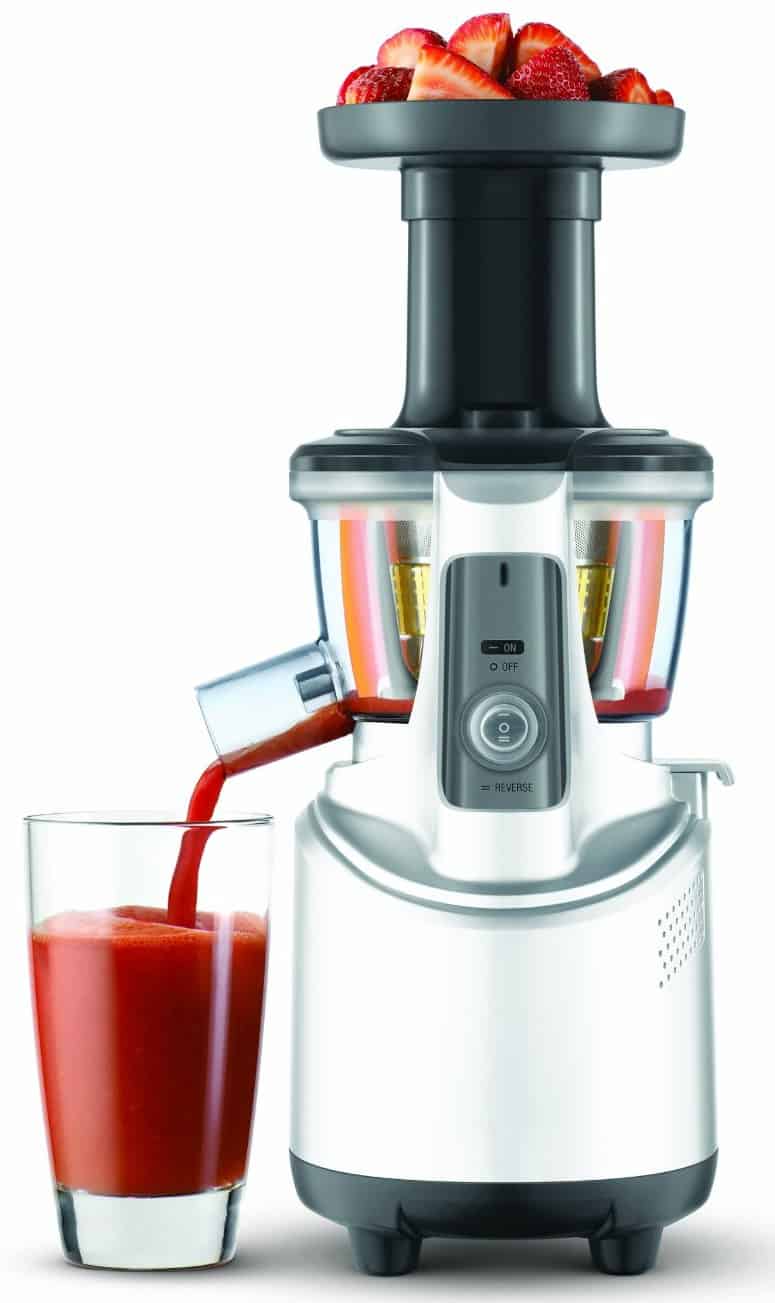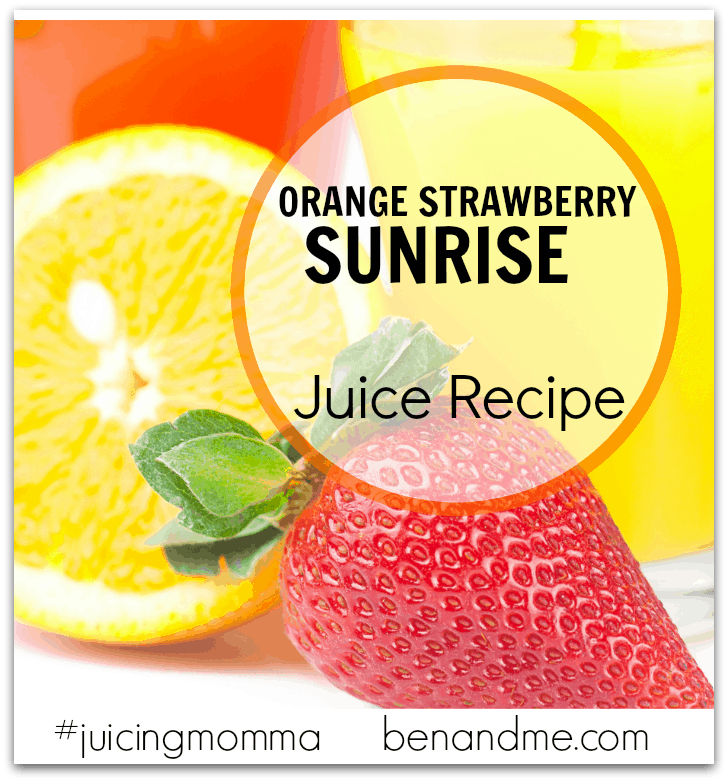One question that I hear a lot is, “What kind of juicer do you use?”
Choosing a juicer can be confusing. Do you want a centrifugal juicer or a masticating one? How much can you afford to spend? These are the first questions to ask. Today, I’m going to share with you which ones I have used and try to clear up any confusion about what types of juicers are available on the market.
There are two main types of juicers: centrifugal and masticating. Centrifugal juicers work by shredding the fruits and vegetables and then whirling at a high speed to separate the pulp and juice. Juicing with a centrifugal juicer is a very common way to juice. I began juicing with centrifugal juicer, and sometimes still use it.
Masticating juicers work by crushing and grinding the fruits and vegetables to extract the juice, then filter out the pulp. They’re also called “slow” juicers because they don’t spin rapidly. It still only takes a few minutes to make juice with a masticating juicer, so don’t let the name fool you. Slow juicers produce drier pulp than centrifugal juicers because more juice is extracted, especially from leafy greens like kale and spinach, and soft fruits like berries. Some people have a preference for juice from a slow juicer, since it tends to be less frothy and thicker than juice from a centrifugal juicer.
When I first began exploring the idea of juicing, and then requested a juicer for Christmas, I knew I needed to keep the cost down for my husband to entertain the idea. He was already thinking I had gone off the deep end (though he has since come around). So I looked for the juicer with the best reviews that was also affordable. I ended up with this one:
This is the Breville BJE200XL Compact Juice Fountain. It’s the baby of the Breville juicers and is a centrifugal juicer. It has worked fine for me, especially on days when I am only juicing for myself. It’s easy to use and easy to clean. The only downside is that it only has one speed and that is FAST. For juicing hard fruits and veggies like carrots and apples, it works like charm and the pulp is dry, letting me know it’s extracted all the juice. For other juices, I usually rejuice my pulp to make sure I get as much juice as possible. This one retails for $130, but you can get it for about $100 at amazon.com.
For a long time, I coveted this juicer and strongly considered purchasing it once my family decided juicing was a good thing.
This, my friends, is the Breville Juice Fountain Duo, and is the one used in the documentary Fat, Sick and Nearly Dead. It has 5 variable speeds and soft fruit attachment to make smoothies! This one is still centrifugal, but with the variable speeds, you can work it at a pretty slow pace and get all of that juice out with juicing your pulp. The lower speed options are also supposed to prevent nutrients from being lost from the heat that is generated at higher speeds. The Duo retails for $500, but you can get it for $350-400 from amazon.com.
I thought for a long time about purchasing the Duo, going back and forth between it and this Breville Fountain Crush Masticating Slow Juicer:
I ended up buying this one at first. Because the Juice Fountain Crush juices slowly, it keeps more of the fiber and less of the froth in the juice and produces very dry pulp. That’s what drew me to it. The Fountain Crush excels with softer foods, like leafy greens, tomatoes, and berries. For these softer foods, it is better to have a lower speed. When I juice with this juicer the pulp is dry because it’s able to get all of the juice extracted before tossing the pulp aside. I rarely had to juice the pulp again when I juiced with this juicer. To be honest, rather than using this juicer I ended up just blending my berries with the juice I make with the Compact Juice Fountain. It saved me time. Eventually, I sold it and purchased the Fountain Duo above. No regrets. I still have the Compact Juice Fountain and if all I want to do is juice some apples and carrots, it’s the one I reach for most often.
This juicer retails for $600 but I have seen it as low as $250 on Amazon (which is a bit more than what I paid on Black Friday last year).
Some things to consider when choosing a juicer:
How often will you use it?
I started with the cheaper Breville model because I wasn’t 100% certain juicing was something I wanted to do (and more importantly, neither was my husband. We were willing to risk $100, but not $400-500. Once I knew that juicing is something I wanted to incorporate into my diet regularly, it made more sense to buy a better quality juicer.
What do you want to juice?
If you’re planning to juice common fruits and vegetables, a centrifugal juicer will like work well for you. But if you want to juice something like wheatgrass, you’ll need to invest in a masticating juicer.
How much can you afford?
I believer in buying the best quality you can afford. I don’t regret buying my first juicer. It was easy to use, not intimidating at all, and set me on the right track to juicing. But it would have been nice not to have spent $100 on that one, and then turn around and spend $250 more a year later.
The bottom line is that the best juicer for you is the one you can afford and will use. Don’t make it burdensome on yourself. If you’re new to juicing , on a tight budget, and want to make juice fast with easy clean-up, go with a centrifugal juicer. If you believe you will juice often, juice wheatgrass, and can afford a little more out of pocket, go with a masticating juicer.
Tomorrow, I’ll be sharing information about how to get started juicing. I hope you’ll come back to learn more about this fantastic way to improve your health.
***
Juice of the Day
Wake up to your day with this yummy combination of fruit, filled with Vitamin C.
Orange-Strawberry Sunrise
Ingredients:
1 cup strawberries
2 oranges
1 lemon
1 cup red grapes
Directions:
- Wash all produce well
- Peel the lemon and oranges, and hull the strawberries
- Add all ingredients through juicer and enjoy (I recommend Breville)
Yield: 16 oz.
Find more juicing recipes.
***
Please know that this is my own personal story and the information I have gathered from my own research and experience. I am not a nutritionist or a doctor (nor do I play either one on TV). If you have any chronic conditions, are under the care of a doctor for any diseases, or take medication, please see your doctor before making changes in your diet or embarking on a juicing fast.






